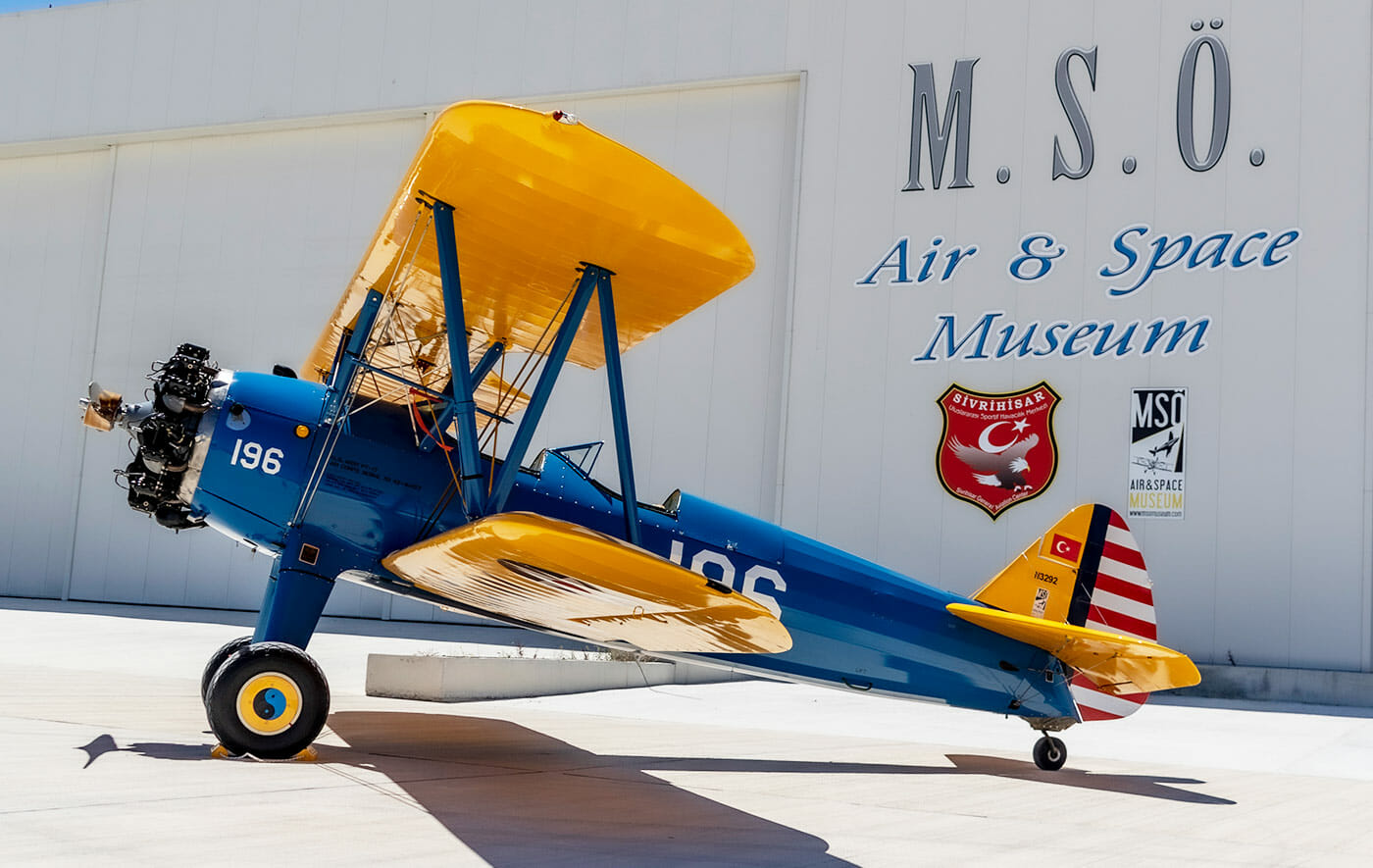

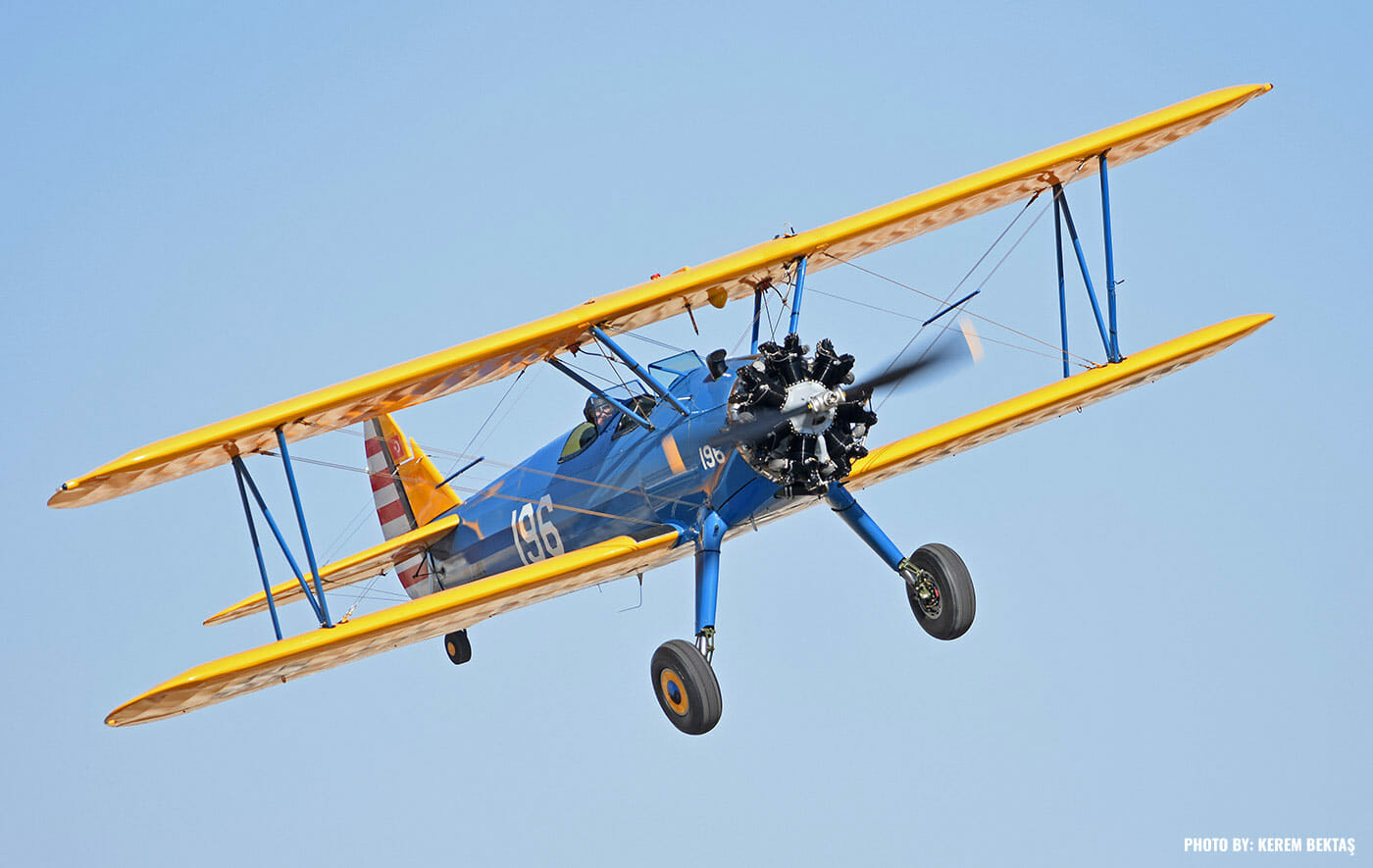
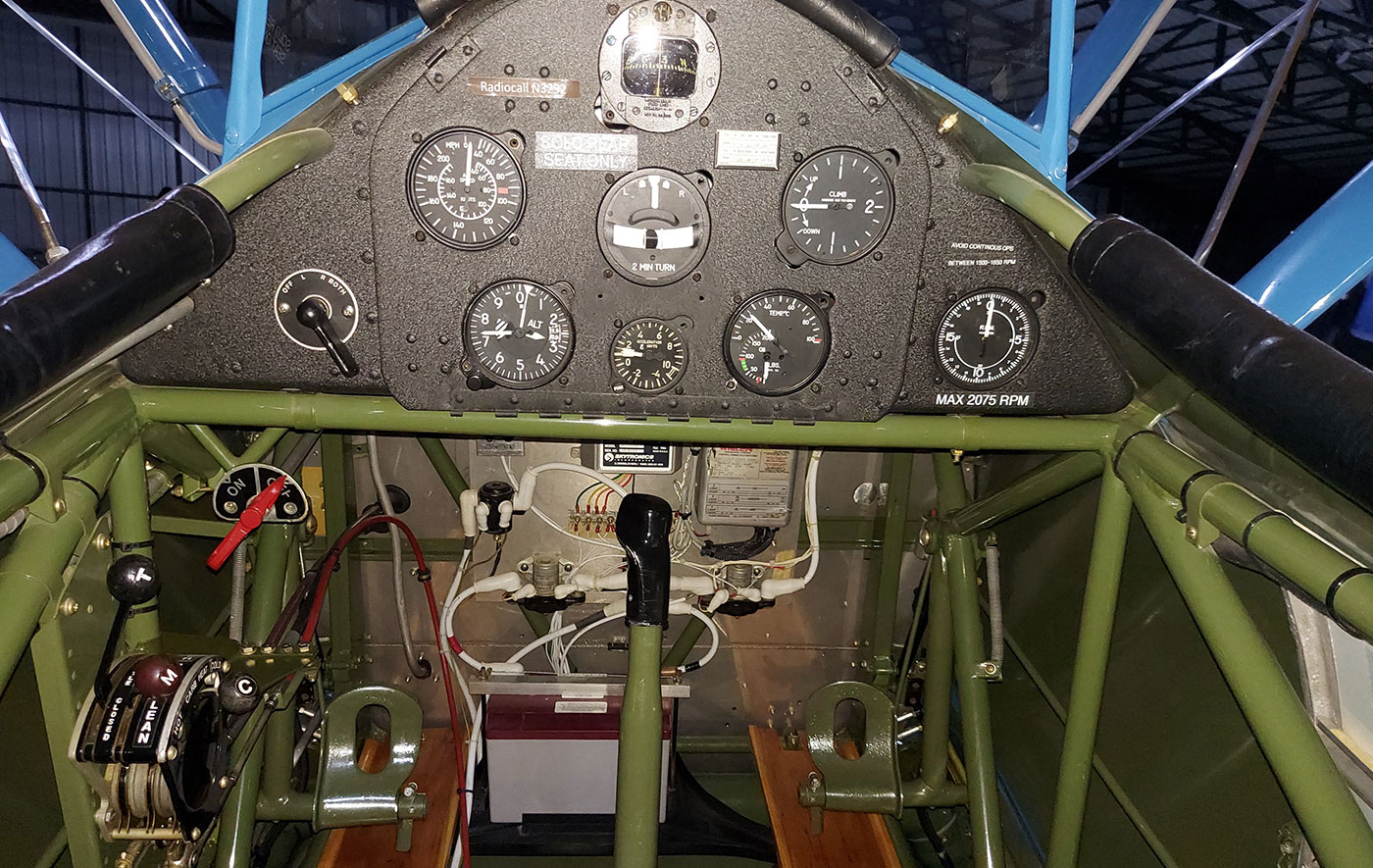
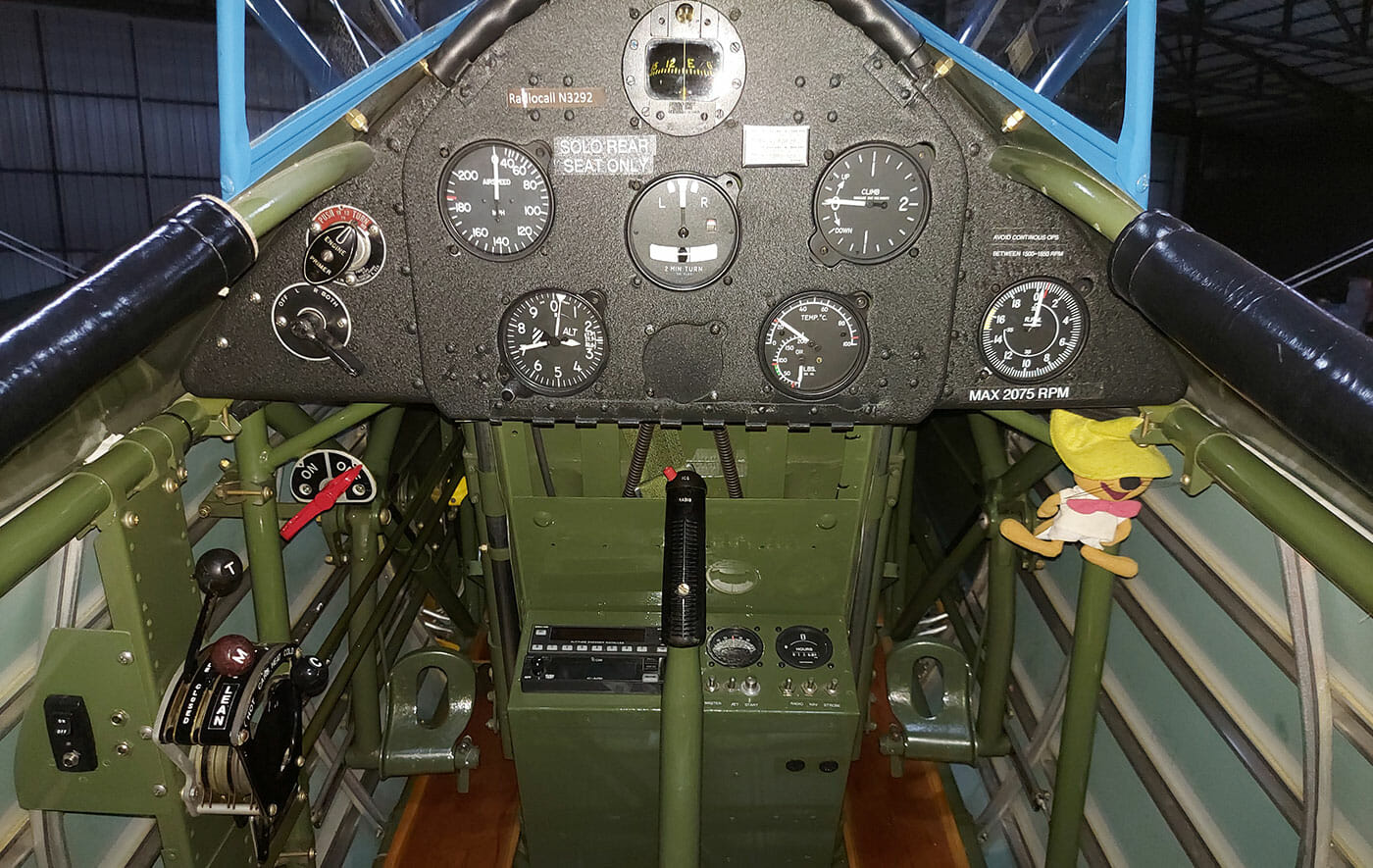
1943 BOEING STEARMAN A75N1 / PT-17
The Boeing Stearman A75N1 (PT-17) was produced by the Stearman Company in Kansas. The Stearman aircraft are the most famous biplane, open-cockpit and two- seater training aircraft in aviation history. It was produced for the US Air Force and Navy in the early 1930s. The first prototype flew in 1934. When the Stearman Company was taken over by Boeing in 1938, this aircraft became known as the “Boeing Stearman”. One of the most important characteristics of the aircraft serving as a Military Training aircraft is they were produced by women during the World War II.
This steel constructed aircraft has wooden wings and fabric covering and has lower costs compared to metal aircraft. There are 7 cylinder radial Continental W670-6N engines and Sensenich W98AA-64 wooden propellers on the Boeing Stearman A75N1 (PT-17).
In the post-war era, most of the Stearmans were used in many fields such as airshows, aerial photography and the film industry. It was preferred in agricultural lands because it is capable of landing on and taking off from rough places through its strong airframe and large wheels. The Stearman aircraft also attracted a lot of attention with “wing walking “ performances during the airshows.
The 1943 model Boeing Stearman with serial number 75-4620 was brought to the M.S.Ö. Air & Space Museum in March 2015 with the contributions of Ali İsmet ÖZTÜRK.
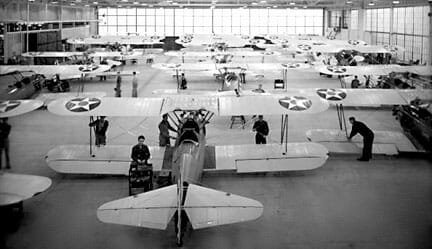
Stearman Production
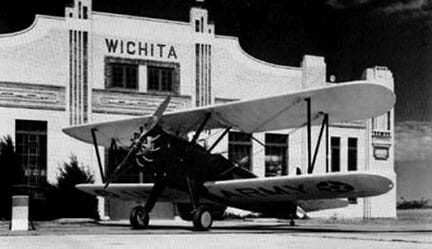
Stearman in front of Wichita Factory
Specifications:
EMPTY WEIGHT
MTOW
FUEL CONSUMPTION
MAXIMUM SPEED
CRUISING SPEED
RANGE
SERVICE CEILING
RATE OF CLIMB
WING SPAN
Height
LENGTH
1936 lbs
2716 lbs
12-13 gal/hr
124 mph
95 mph
505 miles
13,000 ft
840 ft/min
32’2’’
9’6’’
25’
EMPTY WEIGHT 1936 lbs
MTOW 2716 lbs
FUEL CONSUMPTION 12-13 gal/hr
MAXIMUM SPEED 124 mph
CRUISING SPEED 95 mph
RANGE 484 KM
SERVICE CEILING 13,000 ft
RATE OF CLIMB 840 ft/min
WING SPAN 32’2’’
HEIGHT 9’6’’
LENGTH 25’




